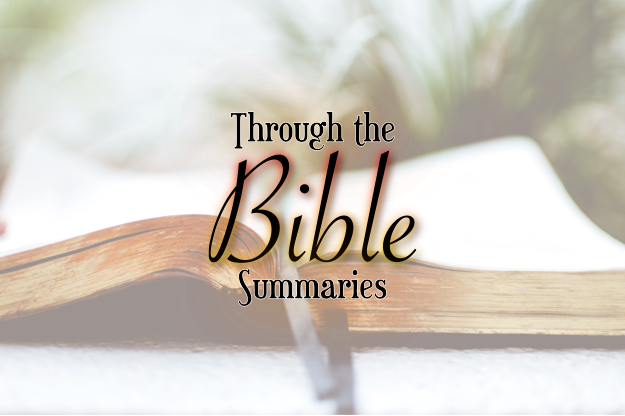Bulletin Articles
The Tabernacle and Priesthood
 The Tabernacle and Priesthood
The Tabernacle and Priesthood
(Ex. 25-40; Lev. 8-10; Num. 3, 7-8)
Moses had gone up on Mt. Sinai for forty days and nights to meet with God. Here he would receive the Law and the particulars of the tabernacle. Many details are spelled out about the tabernacle, priesthood, and the various laws that were integral to the covenant with Israel. From this point, the covenant will be a driving force in the text as the people learned what God meant when He told them, “Now then, if you will indeed obey My voice and keep My covenant, then you shall be My own possession among all the peoples, for all the earth is Mine; and you shall be to Me a kingdom of priests and a holy nation” (Exod. 19:5-6).
The Tabernacle
As part of the covenant that God made with the children of Israel, God instructed Moses to build a tabernacle. The tabernacle (“dwelling place”) was to be God’s “dwelling place” among the people as they wandered in the wilderness (Exodus 35-40). It was essentially a portable “tent,” made out of materials gathered from the people.
The significance of the tabernacle was that it indicated God’s presence on earth among the children of Israel. It was to be erected in the middle of the camp, so all the people could see it. “Then the cloud covered the tent of meeting, and the glory of the Lord filled the tabernacle” (Exod. 40:34). When the cloud was taken up from over it, the people were to pick up camp and move on. The cloud was seen during the day, and fire was seen at night.
The tabernacle was to be built according to an exact pattern that God had revealed. They were not to deviate in any way, and God spelled it out in detail. “According to all that I am going to show you, as the pattern of the tabernacle and the pattern of all its furniture, just so you shall construct it” (Exod. 25:9). “See that you make them after the pattern for them, which was shown to you on the mountain” (Exod. 25:40). This is quoted in Hebrews, and it shows the importance of doing God’s work in God’s way as He directs. It also serves as a shadow, along with the priesthood, to the heavenly things revealed in the New Testament (Heb. 8:5).
Further, the tabernacle was built out of materials that the people willingly contributed. “Take from among you a contribution to the Lord; whoever is of a willing heart, let him bring it as the Lord’s contribution…” (Exod. 35:5). The workers who made it did so because of their skill and understanding. “Let every skillful man among you come, and make all that the Lord has commanded…” (Exod. 35:10). This is a testimony to the kind of work that can be accomplished when people work together, do it willingly, and do it to the best of their abilities. Surely this is a lesson for us to learn.
The Priesthood
In establishing the Israelites as His people, God ordered that there be a priesthood established from the house of Aaron. “Moses said to the congregation, ‘This is the thing which the Lord has commanded to do’” (Lev. 8:5). Though one must have been a Levite to be a priest, not all Levites were priests. However, the Levites were given special duties relating to the work of God, particularly in the tabernacle (Num. 3:5-10). “Thus you shall separate the Levites from among the sons of Israel, and the Levites shall be Mine” (Num. 8:14).
The idea of the “priesthood” was that these special servants could “draw near” to God for the people (Exod. 19:22; 30:20). They were to tend to the work of God, offer up sacrifices for the sins of the people, and direct the people’s attention to the Law. The priesthood was given by God to maintain a fellowship between the Holy God and the sinful nation. They brought the gifts and sacrifices of the people to God, and they conveyed God’s gifts and blessings to the nation (Leviticus 8-10).
Moses gives a good overview of the idea of the priesthood in Numbers 16:5, when dealing with the rebellion of Korah. First, they were chosen by God to be His servants. Second, the primary qualification was that they were to be holy; and third, their essential function was that they would draw near to God for the people. The High Priest was the the culminating point of the priesthood. Aaron was the first, and their requirements were very stringent.
The significance of the priesthood today is that it foreshadowed Jesus as the great High Priest, and all Christians as those who could draw near to God through Jesus (Hebrews 8:1-6; 10:19-22; 1 Peter 2:5, 9).
Together, the tabernacle and the priesthood came to stand for the relationship that Israel had with God. Through the tabernacle (later, the temple), God made His presence known, and the through the priesthood, Israel was able to draw nearer to God.
Doy Moyer





